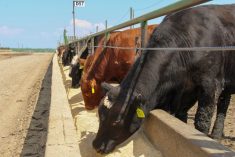CNS Canada — Feed barley prices in Western Canada have shown some strength over the past month, but will need outside support to continue to move higher.
Barley prices at Lethbridge, Alta. have moved off their harvest lows of $160 per tonne a month ago, to current levels around $180 per tonne, said Jim Beusekom of Market Place Commodities.
A lack of farmer selling was a key supportive influence in barley, which Beusekom said was normal for this time of year. The rally in U.S. futures markets over the past few weeks has contributed to the feed grain values.
Read Also

China buys U.S. soybean cargoes ahead of Trump-Xi meet, sources say
China’s state-owned COFCO bought three U.S. soybean cargoes, two trade sources said, the country’s first purchases from this year’s U.S. harvest, shortly before a summit of leaders Donald Trump and Xi Jinping.
“There may be a shortage of sellers today, but there is not a shortage of supply,” said Beusekom, noting farmer selling typically increases in late October and into November with the market historically holding rangebound through the winter.
The prices in September were at a level that many producers would have been selling at a loss, but current values “are not horrible anymore,” which should contribute to an increase in farmer selling.
As a result, he expected it would take a movement in outside U.S. markets to bring more strength to Canadian feed prices.
“The bottom line is that there is cheaper grain in the U.S. than there is in Canada,” said Beusekom. While that could result in more cattle and hogs moving to the U.S. to be fed, Canada may also import more U.S. grain.
Beusekom said U.S. dried distillers grains (DDGs) were already priced very competitively into the Canadian market, but corn was still more expensive than barley.
Ample feed wheat supplies will also come to play in the Canadian market, but Beusekom noted there’s a wide range of feed-quality wheat this year.
“Feed wheat used to be one commodity, but this year it’s a number of different things,” he said, adding that “not all feed wheat is equal.”
Generally, feed wheat out of Manitoba has fusarium issues and Saskatchewan feed wheat has problems with both fusarium and sprouting, while feed wheat grown in Alberta was downgraded due to freezing or sprouting.
As long as the bushel weight is there, the frozen or sprouted feed wheat will see the best prices, while the wheat with fusarium issues will see larger discounts, said Beusekom.
— Phil Franz-Warkentin writes for Commodity News Service Canada, a Winnipeg company specializing in grain and commodity market reporting.













